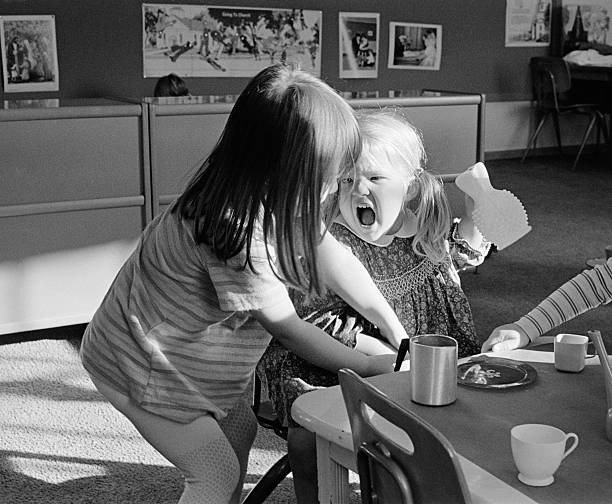How to Handle Aggressive Toddler and Preschooler Behaviour

Source:https://www.parents.com/
Hitting and biting are common behaviors in toddlers and preschoolers, often stemming from natural curiosity and the child’s limited language skills, emotional regulation, and impulse control. At this stage, children are still learning how to manage emotions, communicate effectively, and resolve conflicts. These behaviours are typically not malicious but are a normal part of development. Understanding the reasons behind these actions can help parents address and reduce aggressive behaviors in young children.
Why Little Kids Act Out
Toddlers and preschoolers act out as they explore social norms and test boundaries. Biting is common because children at this age are in an “oral stage,” exploring the world through their mouths. Hitting, on the other hand, can be a way for toddlers to assert their independence or act on impulsiveness, as they are still learning emotional regulation. Some children may also bite or hit to get attention, even negative reactions, which can reinforce the behavior. While this is typical in early development, parents can correct aggressive behaviors by setting clear limits and consistent consequences.
Is My Preschooler a Bully?
Aggressive behaviors, like hitting and biting, are more common in group settings such as daycare or preschool, where conflicts are more likely to arise. According to Dr. Kurt Fischer, these behaviors can escalate from simple disputes, like a disagreement over a toy, and become part of young children’s social interactions and survival instincts as they navigate their environment.
Aggressive behaviors in young children, like hitting or biting, are usually not considered bullying. Bullying involves deliberate meanness that targets a specific child repeatedly, with a power imbalance between the children involved. According to Dr. Eileen Kennedy-Moore, young children often struggle to distinguish whether a friend’s actions are intentional, and they may interpret any behavior they don’t like as purposeful. This misunderstanding, combined with intense emotions, can lead to aggressive reactions in conflicts.
How to Stop Aggressive Behavior
Show your disapproval: The instant your child’s fists fly, state calmly and firmly, “No! We do not hit.” Self-restraint doesn’t come easily at this age, so you’ll need to repeat yourself often to drive home the point. However, while it’s key to tell them to stop, refrain from getting overly animated when you reprimand their aggressive act. It’s a fine line, but you want to clearly state your disapproval while also avoiding giving their misbehavior undue attention or losing your cool yourself.
Separate them: If your toddler hits or bites, calmly remove them from the situation and take them to a quiet corner. Explain that such behavior is not allowed. This gives them a chance to calm down and helps reinforce the message that aggressive actions will lead to separation from the other child, toy, or activity involved.
Intervene: If possible, block the assault. If you see an attack coming, catch your toddler’s hand in midair or place your hand over their mouth. The dramatic halt will certainly send the message that this behavior won’t be tolerated. Again, if they know that their attempts at aggressive actions will be stopped, they’ll typically begin to lose interest.
Apologize for your child: If your child hits or bites a playmate, first focus on the victim to ensure they are okay, and make sure your toddler hears you apologize. This teaches your child empathy by showing that their actions affect others. Also, apologize to the other child’s caregiver, acknowledging that you’re working on addressing the behavior. Be mindful to give the other child and caregiver space to express any upset feelings, and try not to take it personally.
Don’t hit or bite back: Hitting or biting your toddler back in an effort to show them “how it feels” is an ineffective way to encourage empathy. Instead, it conveys that this kind of aggressive behavior is acceptable when someone does something you don’t like.
Don’t play fight: When playing with a child prone to aggression, avoid behaviors like nibbling or hitting. If your child strikes you, respond with a frown and say, “That hurts me.” Never laugh off violent actions, as young children often have a black-and-white view of behavior. Allowing “play fighting” can confuse them about why actual fighting is not acceptable.
Encourage words: Help young toddlers use language and gestures to communicate. They may be able to point to their cup when they want milk or say simple words like “mad” when they’re frustrated. If you reward their efforts to express their feelings verbally, your child will ultimately learn that words are a more effective and socially acceptable way to meet their needs than violence.
Help Your Toddler Handle Tough Situations With Peers
Follow this advice to learn how to decode cues that your child may be getting picked on and teach them how to respond effectively.
Listen closely and observe: Preschoolers often “tattle” rather than report bullying, as they may not yet understand the concept of bullying. They might complain about a classmate being mean or say things like “Lila called me a bad word” or “Henry won’t let me play.” A quieter child may show signs of distress, such as crying, withdrawing, or expressing fear or anger about going to school, but may not be able to explain why.
Encourage them to use their words: Telling your child to “use their words” is a helpful strategy not only for whining but also when dealing with peer conflicts. If your child is upset, like when a friend takes their toy, first calm them down, then teach them how to express their feelings, such as saying, “I was using that.” By coaching your child on how to handle conflicts constructively, you can help prevent situations from escalating into aggression or bullying.
Teach smart responses: During pretend play, use dolls, stuffed animals, or puppets to model “I” statements like “I don’t like that” or “I’d like to try now.” You can also show how to take turns by counting to 10 or singing a song. To build empathy, point out everyday situations, such as when someone feels sad, and ask your child how they can help. For example, “Charley is sad because their block tower got knocked over. How can you help them feel better?” This helps your child develop empathy and the ability to respond kindly in future situations.
In conclusion, It’s normal for toddlers and preschoolers to occasionally act out with aggressive behaviors like hitting or biting as they are still learning about the world, social expectations, and managing their emotions. Setting clear boundaries, consistently enforcing consequences, and redirecting behavior will help guide them toward more appropriate actions. As their emotional and social skills develop, these behaviors should decrease. However, if aggression persists, it’s a good idea to consult a pediatrician for additional support, resources, and to rule out any underlying issues.
Read More: https://childreninfobank.com/safebank/how-to-handle-aggressive-toddler-and-preschooler-behavior/
Image Source:https://www.parents.com/





